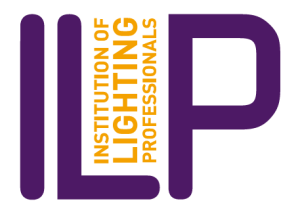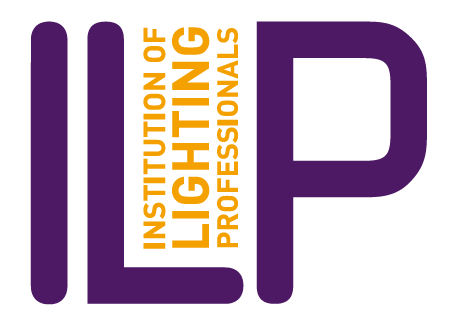For the first ILP ‘How to be brilliant’ event of 2024, Jade King and Graham Rollins of Lighting Design International showed how effective use of colour temperature is becoming an increasingly important design tool. Lighting Journal listened in
The ILP’s ‘How to be brilliant’ events programme, as most ILP members will be well-aware by now, is all about encouraging and inspiring young, new and up-and-coming lighters.
It was therefore very appropriate that the first How to be brilliant of 2024, which took place in April, had as one of its co-presenters Jade King, a lighting designer who has only been in the industry for a little over two years and, in fact, was presenting in public for the very first time.
Jade, a lighting designer with Lighting Design International, was joined by Graham Rollins, creative director for the practice and, with 23 years in the industry most definitely not a newcomer, to talk about ‘How to be brilliant… at colour temperature’.
The event, held at The Lutron Experience Centre in London, was once again sponsored by BEGA, which allows the events to remain free to entry.
Graham and Jade started off their presentation by recapping on the vast array of colour temperature you can nowadays achieve with modern-day LED technology before focusing on a number of key projects.
Of course, playing with and adjusting colour temperature will be very much bread and butter to most ILP members.
What Graham and Jade showed, however, is just how sophisticated, sensitive and nuanced LED lighting can now be when it comes to controlling colour temperature; how the tools and approaches a lighting designer can bring to bear in this context can very powerfully complement the work and vision of the architect.
WORKING WITH HARRODS
The first project Graham and Jade highlighted was work at Harrods in Knightsbridge, with the practice working on a range of areas, including the food halls, hair and beauty and technology departments and restaurant.
Within the food halls, first, different colour temperatures were used within each of the four halls so as to forefront and celebrate the different produce and merchandise being sold.
For example, in the Fresh Market Hall, 3000K was used make the meat, fish, fruit and vegetables really sing visually. ‘We did lots of tests and it tended to make the greens look really vibrant and the oranges look really good. The veining in the meat was also very nice; you had red steak with white veining in it. The fish really looked fresh. So we found that to be the best colour temperature,’ Graham explained.
In the Chocolate Hall, too, the key again was careful testing and experimentation, said Jade. ‘The guys experimented with different types of chocolate and different designs, and they found that 2700K was the best temperature to make the chocolates look the most appetising. I don’t think they got to eat any of the chocolates however!
‘The signage at the side is then 2400K, so a little bit warmer. That is just to add some depth to the space,’ she added.
For the Roastery and Bake Hall bakery section, including the famous Harrods ‘bread wall’, a slightly warmer 2500K was preferred. ‘The room has a lot of decorative lighting, so that was all 2500K,’ said Graham. ‘Then on some of the linear features we had 2700K, and 3000K to the shelving. That was because we found that products with packaging looked better under that temperature.
‘When you have a product that has lots of colours in its packaging, sometimes 2700K can make things look a little bit muddy. We did a lot of tests on various different things, and I think that that’s one of the things that we found. You might think you know what the right solution is, but actually there is nothing better than testing it, and testing it with different products as well as different colour temperatures,’ he added.
In the Harrods Dining Hall, the fact the space is more intimate and uses lower light levels led to 2200K being preferred for the decorative elements and 2500K for all the linear details. ‘That was to give it a bit more of a relaxed feel for the dining experience,’ Jade explained.
ALISON JACQUES GALLERY
The presentation then moved to work the practice had done with architects Rundell Associates at the Alison Jacques Gallery on Cork Street in Mayfair, London. Here, a combination of 3000K to 4000K tuneable white was used throughout the three-storey space, which has two floors of galleries and one of office space.
In the gallery spaces the key throughout was to provide flexibility, adaptability and control to allow as much variation in the space for the different artists and exhibitions.
In Gallery 2, while there was a natural skylight, the practice decided to create a false, artificially lit skylight instead to allow for greater consistency and control than you would get with daylight, which of course will change during the day and depending on the weather.
Jade and Graham highlighted how colour temperature adjustments – in this case 4000K cooler white – had been used to great effect in this gallery when illuminating an exhibition by the artist Sheila Hicks, in particular her work ‘Infinite potential’, which showcases a mountain of woollen shapes.
‘The effect here really makes all the colours very natural. You can see quite a pop in the blue and the green. But you have that very even illumination across the high ceiling. We also made sure that we did not have any shadows,’ said Graham.
‘So all of those woollen features are on top of each other, you’re not getting a lot of shadow or shading from them. It was a really good, natural effect,’ he added.
Jade then highlighted how the same space looked but using 2700K instead. ‘These warmer tones pop a little bit more; they feel a little more cosy but then you lose some of the crispness on some of the blue shapes at the bottom. So that’s why we went with the 4000K,’ she pointed out.
EVOLVING ROLE OF COLOUR TEMPERATURE
As the talk came to its conclusion, Graham and Jade reflected on the evolving role of colour temperature in lighting design.
‘From our point of view, with colour temperature there is a set of things that we know. We know that cooler white will make you more energised, we know that warmer white is better for your sleep patterns. We know how light reacts on certain skin tones,’ Graham said.
‘But effectively, for us, we’ve found that it is still quite a subjective subject matter; there is never a right or a wrong answer. The thing to do is always to test things, and to consult your client.
‘We found that sometimes people had a strong opinion one way or another about the colour temperature they liked. That might be to do with their experiences in life, the amount of light for their eye condition.
‘So it is good to test those things as well. But also to always test things against real-life materials and products. Because obviously that is the only way to be sure. One manufacturer’s 3000K might be very different to another’s. Hence, we always advise people to test things,’ Graham added in conclusion.
This is an abridged version of the full article that appears in this month’s print edition of Lighting Journal. To access the full article, please click on the link to the edition.



